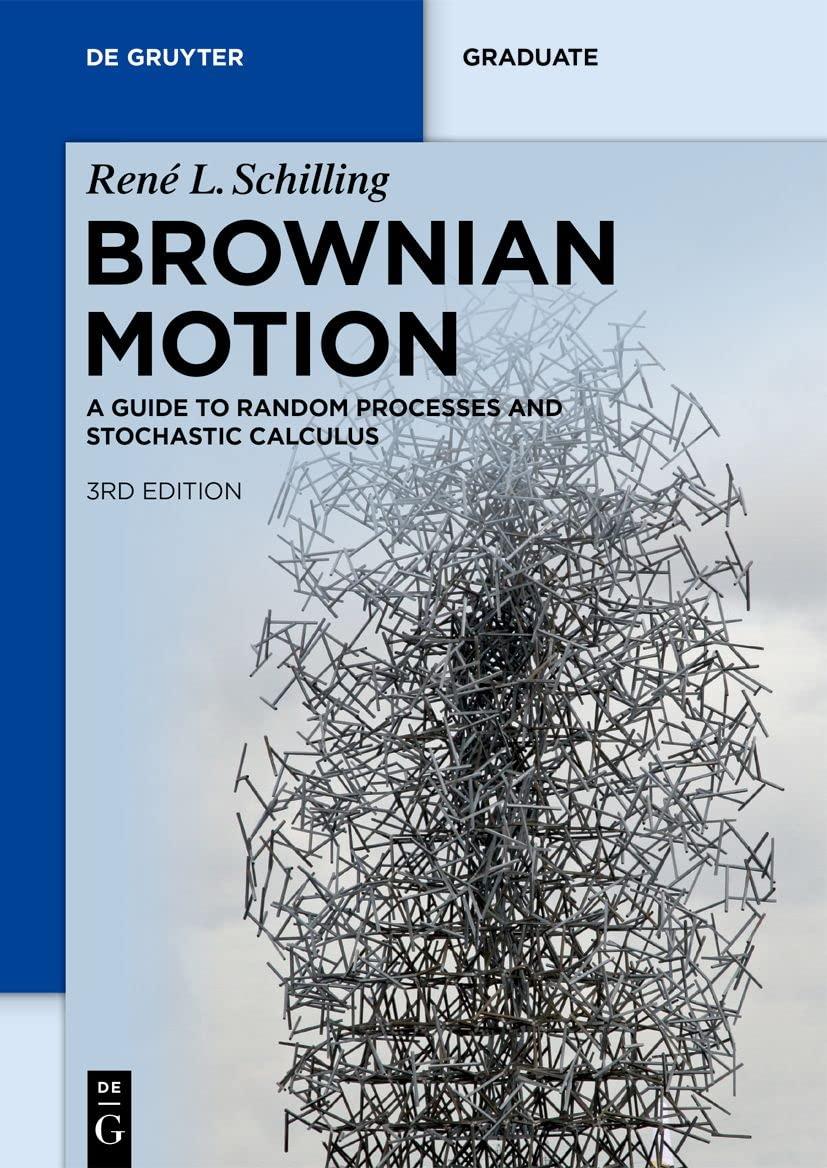Let (left(mathcal{C}_{(mathrm{o})}, mathscr{B}left(mathcal{C}_{(mathrm{o})} ight), mu ight)) be the canonical Wiener space (we assume (d=1) ). We will
Question:
Let \(\left(\mathcal{C}_{(\mathrm{o})}, \mathscr{B}\left(\mathcal{C}_{(\mathrm{o})}\right), \mu\right)\) be the canonical Wiener space (we assume \(d=1\) ). We will now consider the space \(\mathcal{C}\), again equipped with the metric of locally uniform convergence and the Borel \(\sigma\)-algebra \(\mathscr{B}(\mathcal{C})\). It is straightforward to check that Lemma 4.1 remains valid in this context. We define \(B_{t}: \mathcal{C} \rightarrow \mathbb{R}\) as coordinate projection \(B_{t}(w)=w(t)\) where \(w \in \mathcal{C}\) and the corresponding \(\sigma\)-algebras
\[\mathscr{F}_{t}=\mathscr{F}_{[0, t]}=\sigma\left(B_{s}, s \in[0, t]\right) \quad \text { and } \quad \mathscr{F}_{[t, \infty)}=\sigma\left(B_{s}, s \geqslant t\right), \quad t \in[0, \infty] .\]
Let \(h>0\). The (canonical) shift operator is the map \(\theta_{h}: \mathcal{C} \rightarrow \mathcal{C}, \theta_{h} w(\cdot)=w(\cdot+h)\), i.e. \(\left(\theta_{h} w\right)(t)=w(t+h)\).
a) Show that \(B_{t} \circ \theta_{h}=B_{t+h}\). Find \(\theta_{h}^{-1} F\) for \(F=\left\{B_{t} \in C\right\}\).
b) Show that \(\theta_{h}: \mathcal{C}_{(0)} \rightarrow \mathcal{C}_{(0)}\) is \(\mathscr{F}_{t+h} / \mathscr{F}_{t}\) and \(\mathscr{F}_{[t+h, \infty)} / \mathscr{F}_{[t, \infty)}\) measurable.
c) Denote by \(\tau_{C}(w)=\inf \left\{s \geqslant 0: B_{S}(w) \in C\right\}\) and set \(\inf \emptyset:=\infty\). Find an expression for \(\theta_{h} \tau_{C}:=\tau_{C} \circ \theta_{h}\) and show that \(\tau_{C} \circ \theta_{h}=\tau_{C}-h\) if we happen to know that \(\tau_{C} \geqslant h\).
Data From Lemma 4.1

Step by Step Answer:

Brownian Motion A Guide To Random Processes And Stochastic Calculus De Gruyter Textbook
ISBN: 9783110741254
3rd Edition
Authors: René L. Schilling, Björn Böttcher





